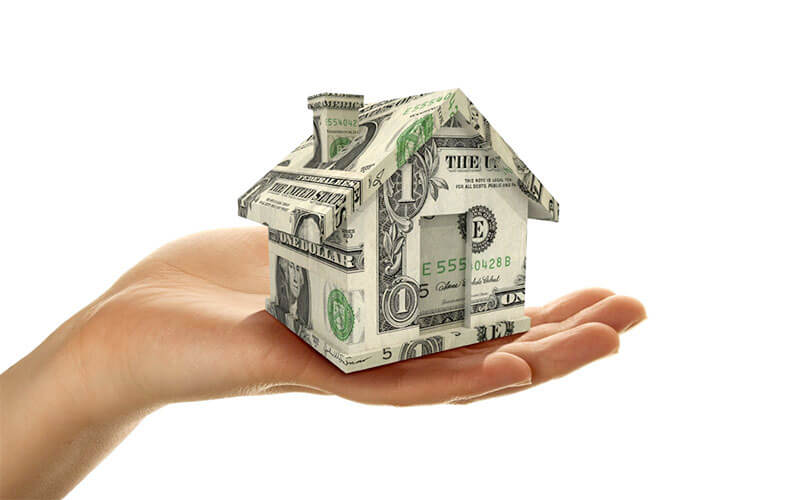There is a rule of thumb that says that if you have the capacity to repay the mortgage, you can afford a single-family house that costs up to two and one-half times your annual gross income. (Annual gross income is the amount you make before taxes are deducted.) Like other rules of thumb, this is a general idea of how large a mortgage you can afford. But, because it is so simple, it doesn’t take into account all the information that will help you feel comfortable with your mortgage payments.
If you are buying a house with someone else (spouse, parent, adult child, partner/companion, brother or sister or other relative), you should consider your co-purchaser’s earnings and existing debts as well. Remember, if you apply for a loan with somebody else, you and your coborrower are both legally responsible for repayment of the mortgage.
Your buying power depends on how much you have available for the down payment and how much a financial institution will agree to lend you.
Your down payment
If you are a first-time home buyer, the price you can afford to pay for a house may well be limited by your ability to come up with the required down payment and closing costs. If you haven’t accumulated much savings, you may want to set aside funds for a down payment on a regular basis from your paycheck. Monies in your checking and savings accounts, mutual funds, stocks and bonds, the cash value of your life insurance policy, and gifts from parents or other relatives may all be suitable sources for a down payment.
Private Mortgage Insurance
Depending on the lender and loan type, you may be able to get a mortgage with as little as 3 percent or 5 percent down. However, putting less than 20 percent down often means you will be required to purchase private mortgage insurance. Private Mortgage Insurance (PMI) helps protect the lending institution in case you fail to make payments on your mortgage.
Avoiding PMI
It is possible to get financing with 0-10% down and not pay PMI (Private Mortgage Insurance). This is why 80-10-10 financing was created. It is called 80-10-10 because a lender provides a traditional 80% first mortgage, a 10% second mortgage, and makes a cash down payment equal to 10% of the home’s purchase price. The same principle applies if the borrower can only afford to make a 5% down payment: 80-15-5 financing is also available.
Your closing costs
In addition to the down payment, you will also need to consider closing costs. The closing is the final step during which ownership of the house is transferred to you. The purpose of the closing is to make sure the property is ready and able to be transferred from the seller to you.
Closing costs generally range from 3 percent to 6 percent of the amount of the mortgage. So, if you were to buy a $100,000 house with a 5 percent ($5,000) down payment, you could expect to pay between $2,850 and $5,700 on your $95,000 mortgage. Sometimes, you can negotiate with the seller of a property to pay some of your closing costs, which will reduce the amount of money you will need to bring to closing.
How much a financial institution will lend you
Apart from having available funds for a down payment and closing costs, the other major factor limiting how expensive a house you can buy will be how much you can borrow.
When you apply for a mortgage, the lender will consider both your earnings and your existing debts in determining the size of your loan. Lenders generally use the following two qualifying guidelines to determine what size mortgage you are eligible for:
The amount of money you owe for mortgage payments, property taxes, insurance, and condominium or co-op fee, if applicable, should total no more than 28 percent of your monthly gross (before-tax) income. This is called the Housing Expense Ratio. The amount of money you owe for the above items plus other long-term debts should total no more than 36 percent of your monthly gross income. This is called the total Debt-to-Income Ratio.
Basically, lenders are saying that a household should spend no more than about one-fourth of its income (up to 28 percent) on housing and no more than about one-third of its income (up to 36 percent) on total indebtedness (housing plus other debts). Lenders feel that if they follow these guidelines, homeowners will be able to pay off their mortgages fairly comfortably.
These lender ratios are flexible guidelines. If you have a consistent record of paying rent that is very close in amount to your proposed monthly mortgage payments or if you make a large down payment, you may be able to use somewhat higher ratios. Some lenders offer special loans for low- and moderate-income home buyers that allow them to use as much as 33 percent of their gross monthly income for housing expenses and 38 percent for total debt.
Don’t Despair, There is a Loan For You
When you go to apply for a mortgage, the lender will use all the relevant data — your income, your existing debts, the purchase price of the house, your down payment, the interest rate on the loan, and the cost of property taxes and insurance — and calculate whether you qualify to borrow the amount of money you need to buy the house.








Leave A Comment